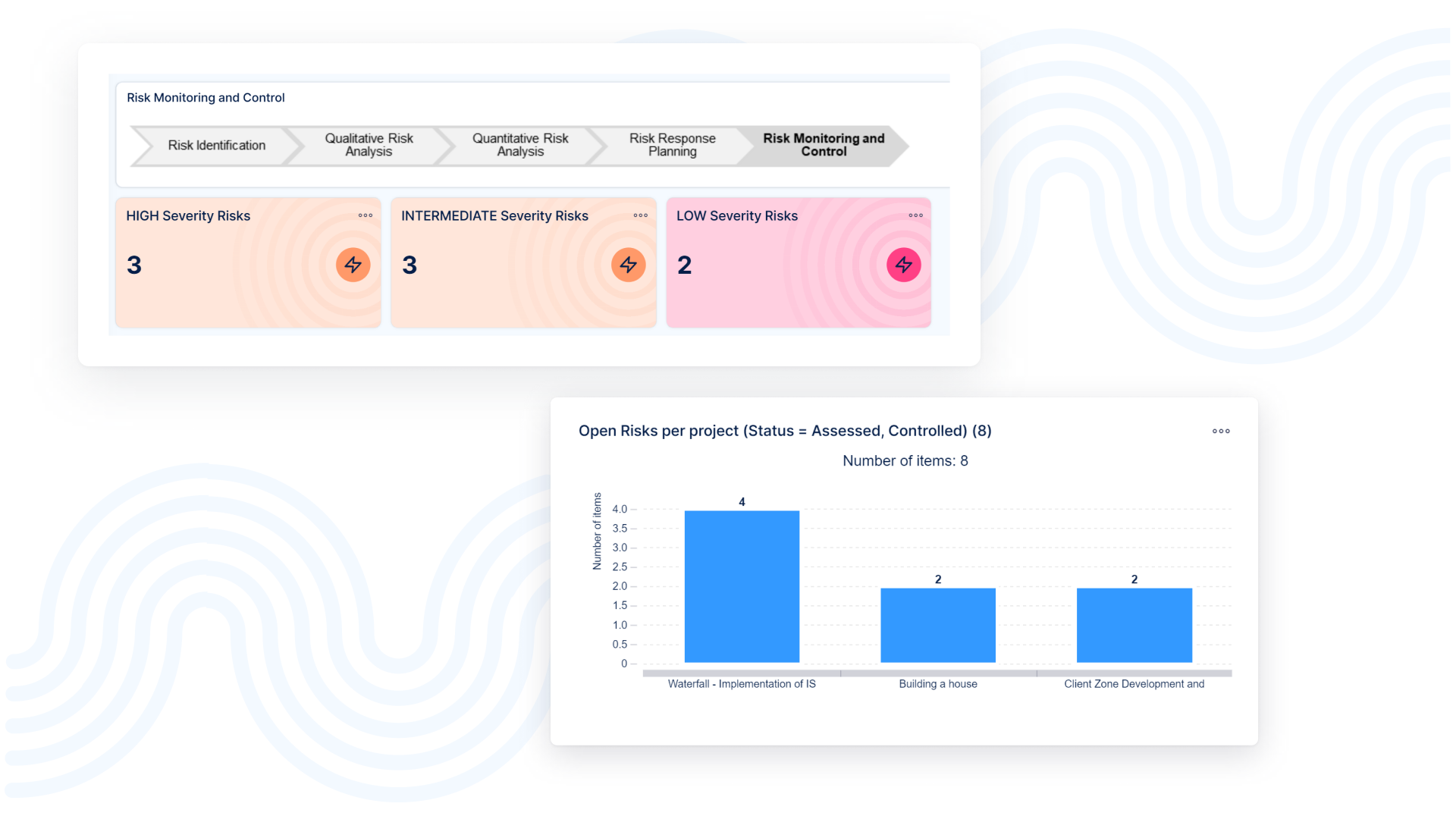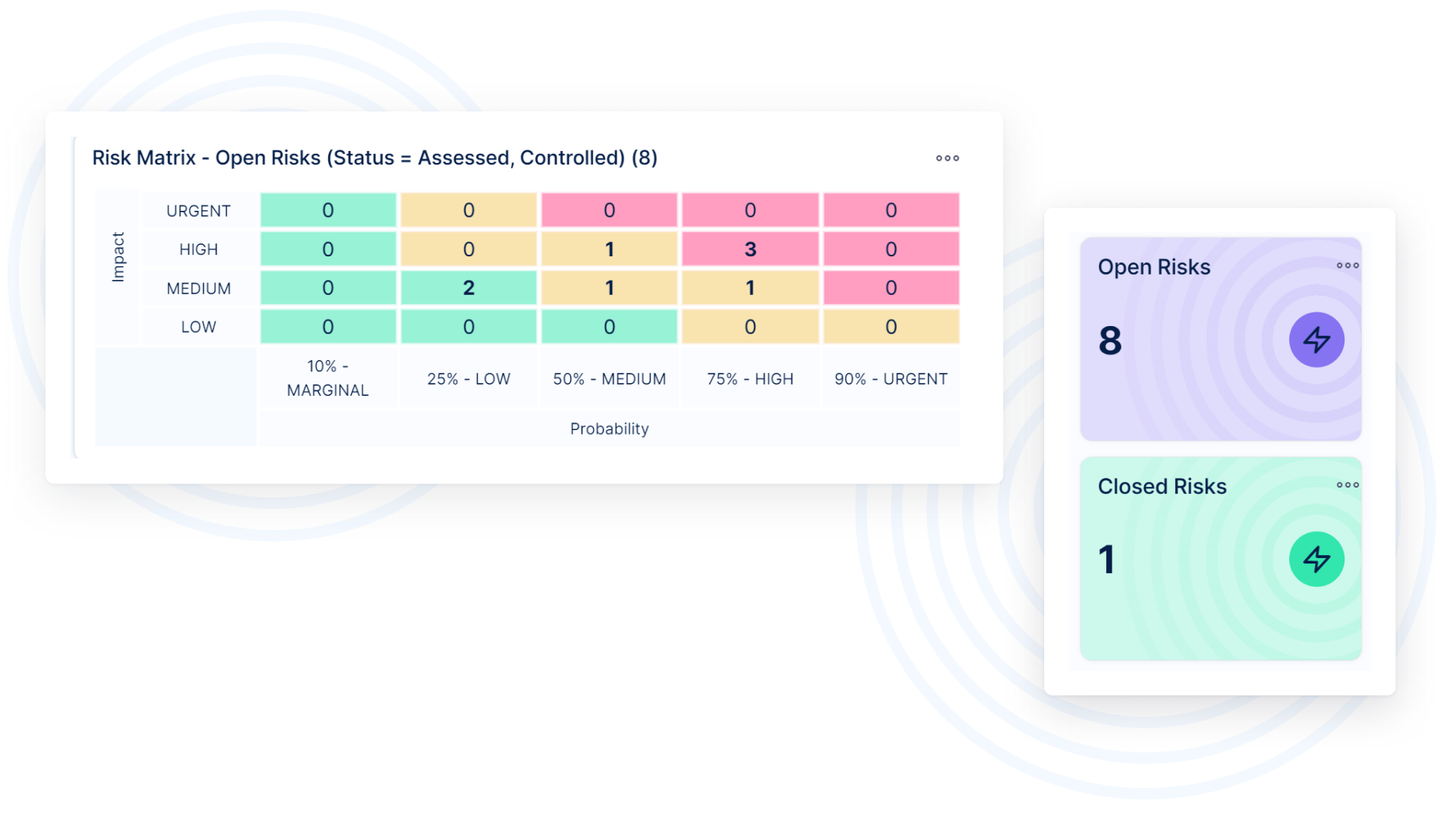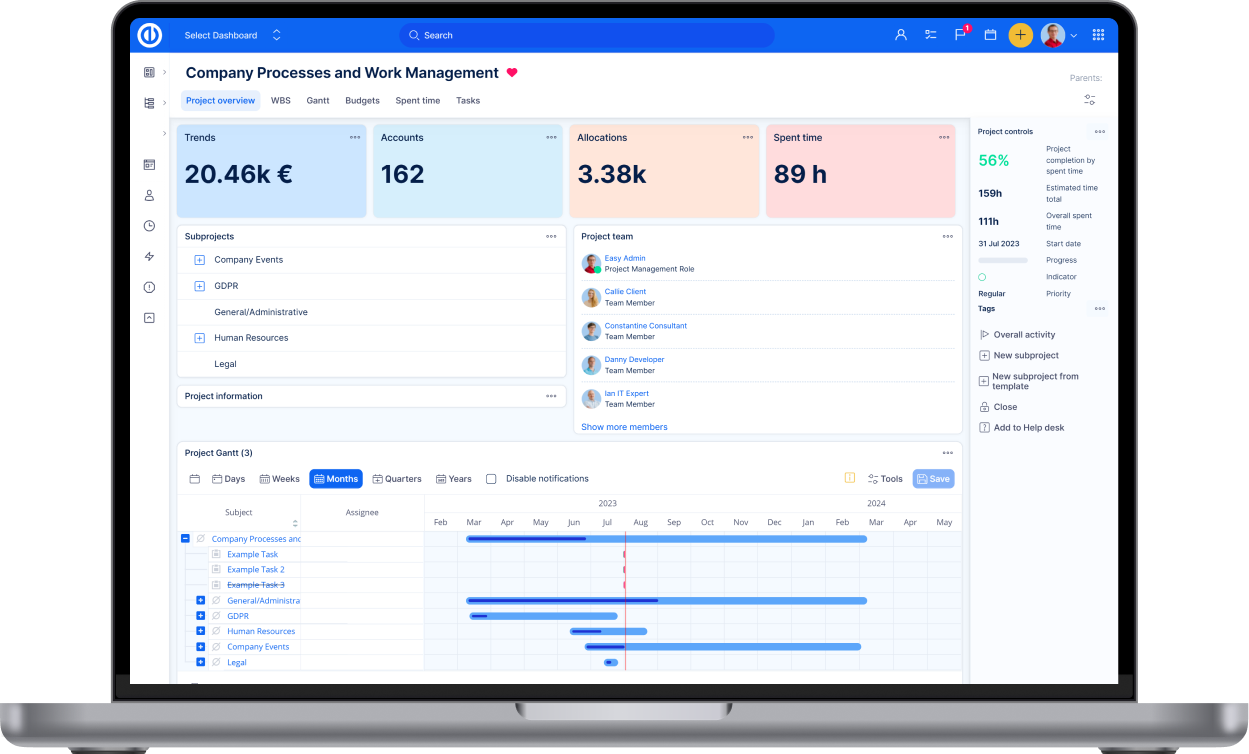The five most common mistakes of risk management
If you're a project manager, prioritizing the identification and management of risks is crucial. Without proper handling, these risks can escalate into significant financial issues for your company. Be familiar with common mistakes to overcome them elegantly.

Table of contents
Why to manage risk
1. Transforming risk into opportunity
2. Clarifying risk management
3. Underestimating risk probability
4. Focusing just on mitigation
5. Not managing risk in advance and continuously without a plan
Easy Project helps avoiding costly risk management mistakes
Why to manage risk
The number and complexity of risks are on the rise. Factors such as swift technological changes, increased interconnectivity, and crises like the pandemic, and the ongoing war in Ukraine, make risks increasingly challenging to predict and manage. Project managers face a greater likelihood of errors and failures than before.
Learning from others' missteps is invaluable for improving risk management skills. Here are five common errors in managing risk you should avoid when managing a project.
1. Transforming risk into opportunity
Project managers are human and, like many, tend to view risks as negative. However, even the most skilled managers sometimes overlook the potential for opportunities arising from risky situations.
Successful project managers go beyond merely mitigating risks. They carefully assess each risk to understand how it can be transformed into an opportunity. For instance, if a significant risk jeopardizes an ongoing project, this could be a chance to deprioritize it and reallocate resources towards a more viable project, potentially leading to greater success.
2. Clarifying risk management
In risk management, a fundamental step is identifying the risks that could affect a project, but teams often blur the lines between causes, events, and impacts, losing focus on the actual risk events. For instance, a risk cause might be a developer overwhelmed by multiple projects, potentially leading to the risk event where the developer cannot adequately attend to your project. The impact of this event could be that the project is failing due to a lack of proper attention. It's crucial to define these elements distinctly to manage them effectively.
On another note, many teams become overly reliant on checklists, especially in environments where projects are repetitive, and risks appear consistent, like an IT team specializing in data migration. While a risk checklist can efficiently streamline the identification process, there's a danger in becoming complacent. Teams may assume that the only possible risks are those already listed, neglecting to consider other potential risks. Although starting with a checklist is beneficial, it's important to remain vigilant and open to identifying additional risks that may arise.

Risk monitoring and control
3. Underestimating risk probability
After identifying all potential risks in a project, the subsequent step involves categorizing them according to their likelihood of occurrence. Risks with a high probability need to be addressed prior to project implementation. However, some project managers may intentionally minimize these risks to avoid inspection and preserve their reputation.
The issue with underestimating these probabilities is clear. If risks are not accurately assessed, your team may fail to implement the necessary precautions, potentially leading to the project's failure.
4. Focusing just on mitigation
While many project teams primarily focus on mitigation when addressing risk response, it's important to remember that mitigation is just one of several strategies, and it's particularly used for managing threats. To handle risks effectively, a comprehensive response strategy that includes mitigation, avoidance, transference, and acceptance is essential.
Mitigation aims to lessen the likelihood or impact of adverse risk events. For some risks, an avoidance strategy might be more appropriate, completely eliminating the risk by addressing its root causes. Alternatively, risk transference involves shifting the risk to a third party. And if these strategies are not doable, accepting the risk and preparing a contingency plan may be necessary. Solely concentrating on mitigation could lead you to overlook the most suitable response for a specific risk.

Risk matrix
5. Not managing risk in advance and continuously without a plan
Some project managers struggle with delegation, often taking on responsibilities that should be assigned to team members, which is crucial for effective risk management. Assigning ownership of each risk to appropriate team members based on their skills rather than centralizing responsibility is vital. Each risk owner is then required to execute the response plan, continuously monitor the risk, and provide regular status updates. This approach not only fosters accountability but also enhances the effectiveness of the response plan.
Unfortunately, many project leaders treat risk management as a one-time task during the planning phase, merely filling out the risk register and then neglecting it. In contrast, risk management should be a continuous process, integrated into every project meeting where risk owners report on their actions and address any new potential risks or triggers, ensuring that risk management persists throughout the project’s lifecycle.
Easy Project helps avoid risk management mistakes
To give you the complex picture, we also mention other issues related to risk management, including not aligning risk strategy with business goals, ignoring the human factor, overlooking emerging and interrelated risks, relying on outdated or inaccurate data, and failing to learn from mistakes. Effective risk management solution requires aligning risk strategies with business objectives, considering human elements, staying aware of new risks, ensuring data accuracy, and continually learning from past errors to refine risk management practices.
Every successful project relies heavily on a robust risk management strategy, but it's surprisingly easy to make mistakes in this area. Thankfully, with Easy Project, you're not on your own.
Our risk management module is designed to tailor perfectly to your specific project needs. It offers risk registers, comprehensive overviews, detailed reporting, both qualitative and quantitative analyses, and customizable indicators. With these tools at your disposal, you can effectively identify, analyze, and manage risks to ensure your project's success.
Sign up for Easy Project, a tool providing project risk management software that gives your project a shot at success.
Frequently asked questions
Related articles
Best Tools for Digital Project Management (Part 2): How to Manage Risk, Finance, and People
Risks Do Differ – Various Pitfalls in Project Management: A Few Tips for Easier Risk Management Thanks to Effective Risk Distribution
How – especially in 2021 – not get lost in one of the many pitfalls that await your project? The solution is to prioritize risks thanks to accurate identification and categorization.


